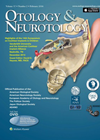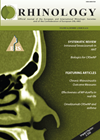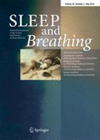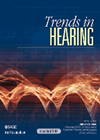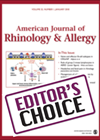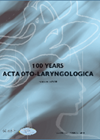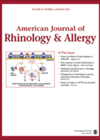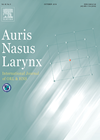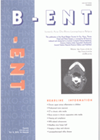
Journal Reviews archive for 2016
Cochlear implantation in SSD
There are currently several trials for cochlear implantation (CI) in single-sided deafness (SSD) being undertaken to answer some of the questions this paper from New York raises. Who is best suited to receive one? What are their outcomes and how...
CT guided cochlear implant programming improves performance
There is currently no national (UK) consensus on imaging patients for cochlear implantation. This paper may change that. It has shown increased hearing and quality of life in paediatric cochlear implant (CI) users when the programming has been assisted by...
Do spreader grafts improve nasal airflow?
This Portuguese study looks at pre- and postoperative peak nasal inspiratory flow (PNIF) in 72 consecutive patients undergoing septorhinoplasty surgery. The aim was to demonstrate the functional value of spreader graft insertion, the aesthetic value having already been confirmed. In...
Chronic rhinosinusitis and sleep
This is an interesting article from the Chung Shan Medical University in Taiwan. One-hundred-and-thirty-nine patients were enrolled into this five-year study. They all had chronic rhinosinusitis with or without polyposis and underwent sinus surgery. The aim was to investigate a...
Effectiveness of oral pressure therapy in obstructive sleep apnoea: a systematic analysis
Oral pressure therapy (OPT) is a relatively new form of therapy for obstructive sleep apnoea (OSA). Paradoxically it seems to work even though it creates a vacuum in the oral cavity as opposed to the gold standard of continuous positive...
Open hearing-aid fittings or closed
There is always a balance between different types of hearing aids and their advantages and disadvantages that influence choice of device and ultimately user preference. Personal choice also plays a role when deciding on behind the ear or in ear...
The microbiological environment of the paranasal sinuses
This article reviews the ecology of the sinuses and tries to make sense of the confusing literature on the subject. This covers the details of molecular studies, particularly those which attempt to differentiate normal sinuses from those in patients with...
Implantable devices and large magnets – do they mix well?
Although all brands are MRI safe at 1.5 T, the active middle ear implant system Vibrant Soundbridge (VSB), is special since it houses two magnets. These include a magnetic floating mass transducer (FMT) and an audioprocessor fixing receiver magnet which...
Olfactory neuronal damage in sinusitis
So many patients with nasal disorders have poor olfactory function, yet sometimes the nose may seem comparatively clear of conductive problems. This study postulated that neuronal damage in the olfactory apparatus would lead to a leakage of neuron specific enolase...
What are the non-inflammatory causes of a conductive loss?
This retrospective study looked at patients with an intact tympanic membrane with non-inflammatory causes – i.e. otitis media and cholesteotoma. They document their findings based on exploratory tympanotomy. They operated depending on the findings with either a stapedectomy or a...
Robot controlled mastoid surgery!
This is a fascinating piece of work by a Korean team developing a human-robot collaborative control. Their model uses image guidance surgery to locate the drill tip’s position. Important structures can be highlighted – in this case the facial nerve....
Is epistaxis affected by the weather?
In this Bosnian study, the authors attempted to determine if air pressure, temperature and humidity had any effect on idiopathic epistaxis. The study took place over a three-year period and included 300 patients. A comparison was performed of meteorological data...

